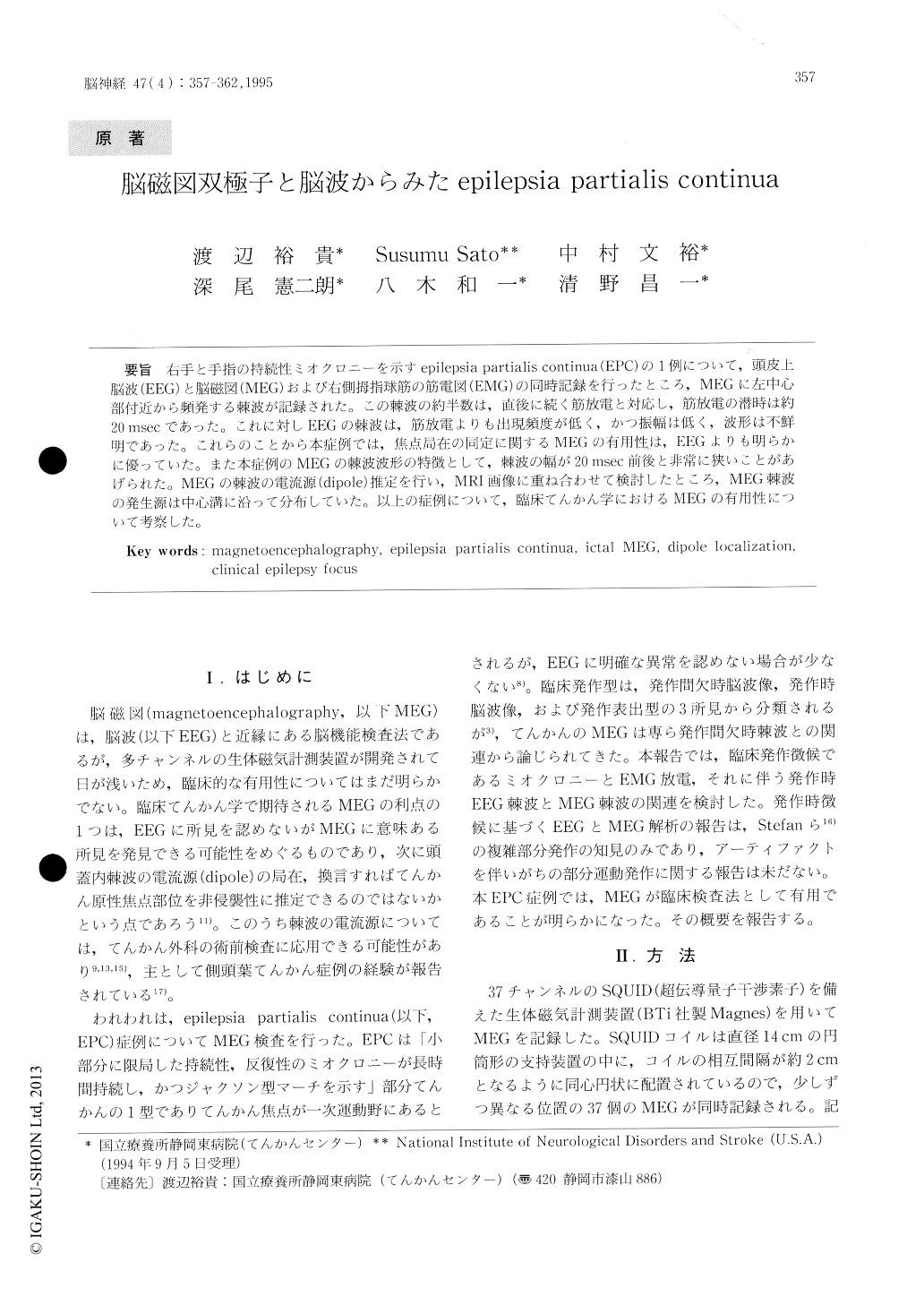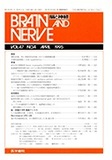Japanese
English
- 有料閲覧
- Abstract 文献概要
- 1ページ目 Look Inside
右手と手指の持続性ミオクロニーを示すepilepsia partialis continua(EPC)の1例について,頭皮上脳波(EEG)と脳磁図(MEG)および右側拇指球筋の筋電図(EMG)の同時記録を行ったところ,MEGに左中心部付近から頻発する棘波が記録された。この棘波の約半数は,直後に続く筋放電と対応し,筋放電の潜時は約20 msecであった。これに対しEEGの棘波は,筋放電よりも出現頻度が低く,かつ振幅は低く,波形は不鮮明であった。これらのことから本症例では,焦点局在の同定に関するMEGの有用性は,EEGよりも明らかに優っていた。また本症例のMEGの棘波波形の特徴として,棘波の幅が20 msec前後と非常に狭いことがあげられた。MEGの棘波の電流源(dipole)推定を行い,MRI画像に重ね合わせて検討したところ,MEG棘波の発生源は中心溝に沿って分布していた。以上の症例について,臨床てんかん学におけるMEGの有用性について考察した。
A concurrent recording of electroencephalogra-phy (EEG), magnetoencephalography (MEG) and electromyography (EMG) was carried out in a patient with epilespia partialis continua. He had continuous clonic jerks in his right hand and fingers. The EMG electrodes were placed on the thumb of his right hand. We observed numerous MEG spikes in the left central region and about half of them were accompanied by EMG potentials with a latency of about 20 msec. The EEG spikes appeared less frequently, had low amplitudes, and had unclear morphologies and further, no clear association with EMG potentials.

Copyright © 1995, Igaku-Shoin Ltd. All rights reserved.


